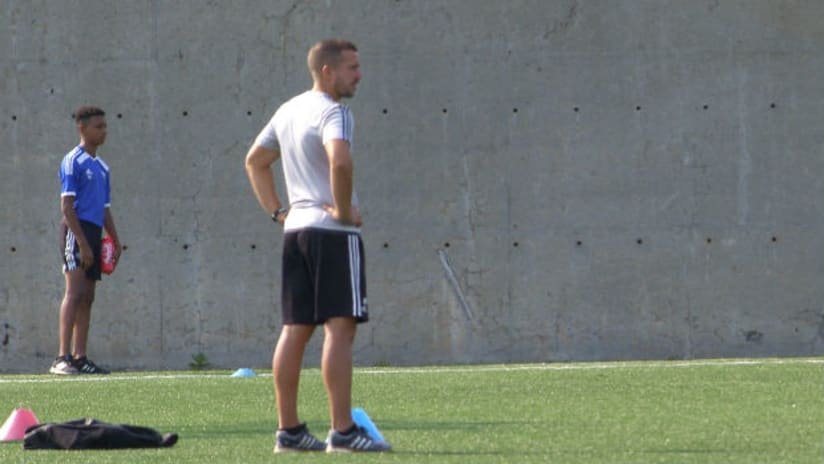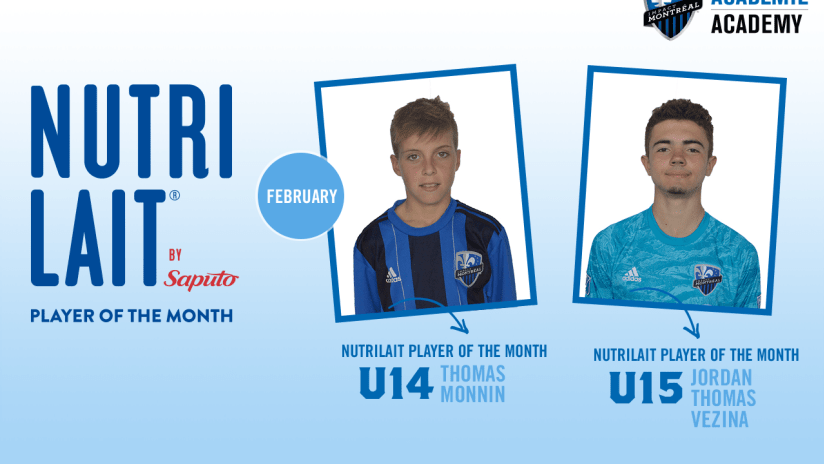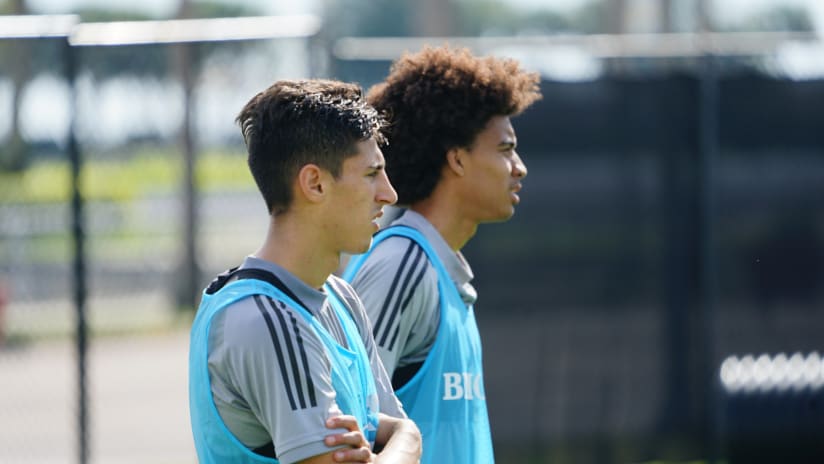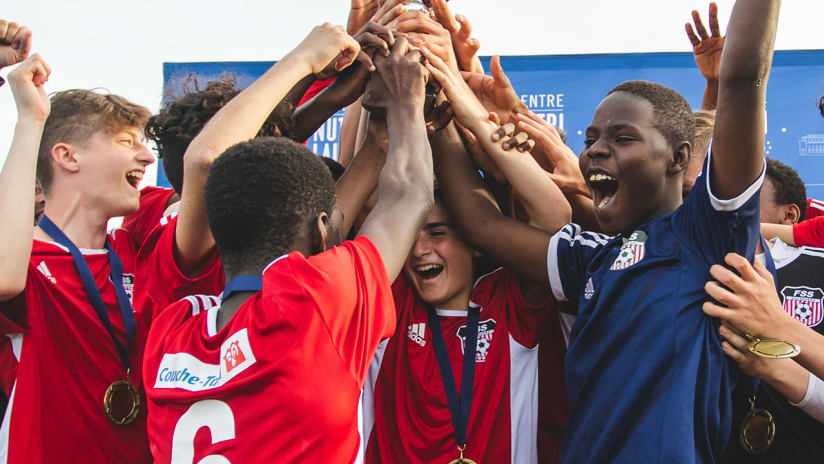MONTREAL – Say you’re in Paris, France, talking physical preparation to a knowledgeable audience.
FC Barcelona’s physician is there. So are fitness coaches from AS Roma, Standard de Liège and AS Monaco, among others. Academics and researchers complete the picture in front of you, the fitness coach working for an MLS club. You want to convince them that your work in North America involves constraints unlike anything that they have to deal with.
This was Yoann Damet’s attempt:
“The example I gave was simple: imagine that you, with your professional teams, have to come and play every away game in Montreal and then go back to France to play your home games.”
Damet’s figures are a bit far-fetched; one Montreal-Paris round-trip is 7,000 miles. But Damet, the Impact Academy’s strength and conditioning assistant coach and Under-12 head coach, understands the two realities. Born in Marseille, he coached youth teams in France’s sixth, fourth and second divisions before joining the Impact in February 2014.
The president of the French Association of Professional Football Fitness Coaches, GFC Ajaccio’s Sébastien Lopez Guia, heard of Damet through a mutual colleague from Damet’s time as youth coach at Ligue 2’s Dijon. Damet was thrilled to accept an invitation to travel to Paris on Sept. 4 and provide a point of comparison between travel for MLS clubs and academies and their French counterparts.
Damet, at the Academy, prepares youth teams for U.S. Soccer Development Academy play, where they’ll sometimes travel for up to eight hours by bus to play twice in two days. For a look into first-team affairs during his presentation, he interviewed fitness coach Paolo Pacione, who gets his troops ready for lengthier trips – albeit by plane.
In both cases, the technical staff can only plan a week’s training once they know when they travel. Most European clubs, by contrast, plan their week’s training around, well, whatever they may well want to work on, unless continental competition increases their otherwise short trips.
“I actually take the whole annual calendar and start looking, ‘Okay, what days are we traveling? What days are we going to be actually off?’ And then, you can start thinking about how the weeks will go from there – heavier weeks and lighter weeks,” Pacione tells MLSsoccer.com. “When are you going to get your best bulk of your work? When are you going to feel your best? When are you going to feel your worst? And you work around that.”
When MLS players travel from one coast to another, their bodies do react to the time difference. The burden of fatigue does increase. Over the last three years, Pacione has seen several Europeans – the likes of Marco Di Vaio, Alessandro Nesta and, more recently, Didier Drogba – try to adapt to an MLS travel schedule. For him, a travel day is “like a training session on its own.”
“Other North American sports, whether it’s NBA, MLB, they’re always traveling quite a bit,” Pacione tells MLSsoccer.com. “The practices are a lot more readily used. We can learn a lot from them. There was a great article during the NBA Playoffs with what LeBron James was doing between games, when he flies coast-to-coast. We would love to do a lot of those things, but not being in a chartered flight makes it a lot more difficult.”
Commercial flights are a dreadful recuperation environment for athletes. Players can wear compression garments to relax their muscles, sure. But with business and casual travelers around them, it can be tricky to get up for a stretch, let alone for more advanced methods such as using recovery boots, which create and release intermittent pressure to encourage bloodflow.
The key is thus to schedule the return flight in such a way that it allows for quality rest – while players may want to return home as soon as possible, flying back immediately after a game isn’t always the best option. If possible, the team will have a regeneration session on the road.
And that’s only what happens after a game.
“A heavy session on the eve of a travel day will have an impact on the load induced on the players at the end of the week,” Damet explains. “So do we have a heavy session before we travel? Do we have a lighter session before we travel, and then we have a heavy session once we get there? Those are questions that we have to ask beforehand in order to prepare such trips.”
There’s also the time difference to address. According to Pacione, his players adapt in a day-and-a-half, with a sound plan – arriving late to destination, grabbing a meal and going to sleep soon afterward.
But that’s just one East Coast team’s point of view. West-based clubs preparing for a game in the East, Pacione says, can “wake up at their normal time at home – let’s say 8am, so it’s 11am here, and the game is still not for another seven hours or more.”
Then again, Montreal also follow the West’s lead, sometimes. When the Impact traveled to San Jose in May 2013, Pacione insisted that the players follow their internal clock, as if they were still on Eastern Time. At 1 pm, local time, on the day of the game, the Impact grabbed a creditable point at Buck Shaw. They then flew to New York, where they were playing the Red Bulls that Wednesday. No adaptation to the ‘new’ time zone was needed – though they did lose to the Red Bulls, 2-1.
Yet there are advantages to going through all of this madness. Damet says that his youngsters that undertake such trips are better equipped to manage their sleeping and eating habits, their hydration and their recovery, for instance.
“Their body doesn’t adapt [to the travel demands of the pro game], but it’s part of their education,” Damet says. “For youngsters, facing those constraints pretty early on means that they will be aware of them, and they’re better prepared to take care of themselves and get ready for competition.”
And at the professional level, there may be a competitive advantage to being used to such distances. The 2014 FIFA World Cup required teams to travel thousands upon thousands of miles – the United States very much a loser in those sweepstakes. Yet the US, with their 10 MLS representatives and experience in CONCACAF, navigated through the travel constraints with relative ease.
“You acclimatize to it, for sure,” Pacione says. “A lot of it is your mental state. If your mental state is that it’s not a big deal, then it’s not a big deal. If your mental state is that it is a big deal, then you’re going to have a lot more stress.”
More than just physical preparation, dealing with distances and optimizing performances involves every aspect of the athlete. Good thing, then, that Damet had some interesting discussions about the assessment and development of cognitive skills in Paris, as well. Few clubs, Damet says, are studying the cognitive skills of their players. But Olympique Lyonnais does, and Damet had an exciting chat with their representative at the conference.
“But we can’t talk too much about the project,” Damet says, chuckling. “It’s a sensitive subject.”
What happens in Paris stays in Paris, then.
Follow @olitremblay




